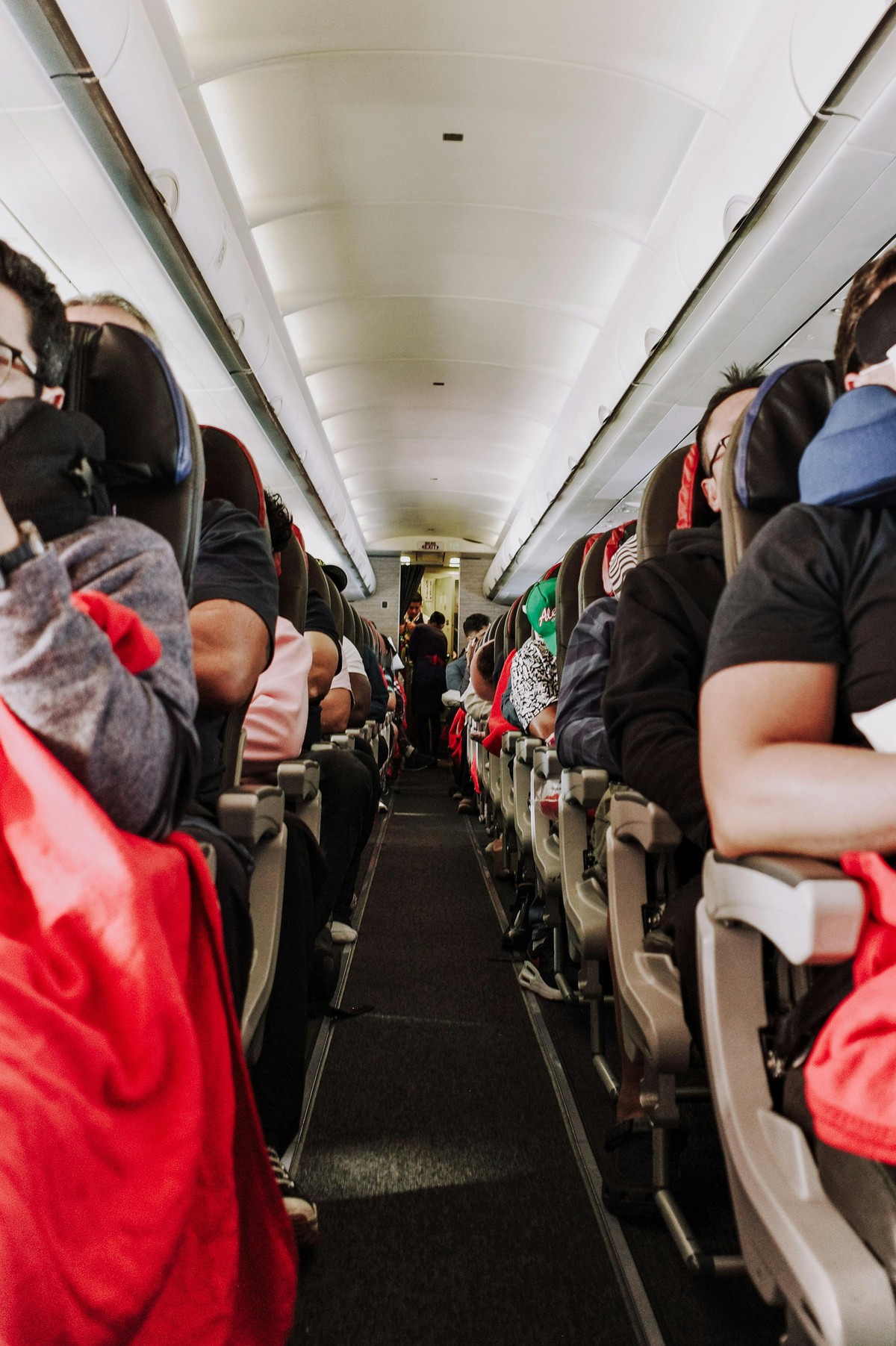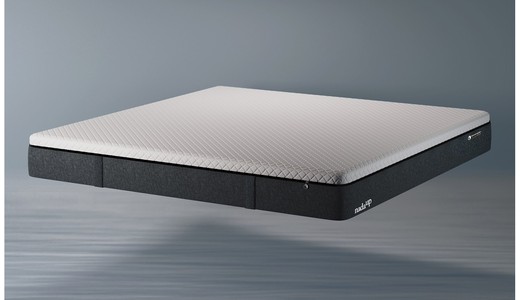In-Flight Insomnia: Why Air Travel Wrecks Your Sleep and How to Fix It

At first glance, flying might seem glamorous or efficient. But anyone who has ever stepped off a red-eye flight with puffy eyes, aching limbs, and a dazed mind knows this truth: airplane travel plays havoc with your sleep. Beyond the cramped seating and airline food lies a deeper problem. Flying disturbs not just your rest, but your hormonal balance, circadian rhythms, and even your emotional well-being. In this blog, we explore the scientific underpinnings of why travel by air is so disruptive, and more importantly, how you can overcome it with preparation, insight, and the supportive embrace of NadaUp's scientifically designed mattresses and pillows.
The Hidden Sleep Killers of Air Travel
1. Alcohol in the Air
Many passengers turn to alcohol mid-flight, hoping to relax or doze off. However, alcohol is a sedative that fragments sleep and suppresses REM cycles. According to the National Sleep Foundation, alcohol initially induces sleepiness but leads to poor sleep quality later in the night (Roehrs & Roth, 2001). In a dry cabin environment, alcohol also dehydrates the body faster, contributing to headaches and restless sleep.
2. Irregular Meal Times and Heavy Foods
Flights disrupt your daily eating schedule, with meals often served at odd hours. This affects your circadian rhythm, which regulates sleep and metabolism. A study in Cell Reports showed that irregular eating times, especially during travel across time zones, dysregulate clock genes and delay melatonin secretion (Sato et al., 2014). Rich, heavy airplane meals also increase gastric discomfort, making it harder to fall asleep.
3. The Posture Problem: Sleeping Upright
The human body was never designed to sleep in an upright, crunched position. Prolonged seated sleep leads to poor spinal alignment, neck stiffness, and muscular tension. Over time, this discomfort accumulates, resulting in subpar sleep quality and elevated cortisol levels.
4. Blue Light from Entertainment Screens
That little screen inches from your face might be entertaining, but it's wrecking your melatonin production. Blue light suppresses melatonin, a key hormone for sleep, more significantly than other wavelengths (Harvard Health Publishing, 2012). Watching movies on high-brightness screens right before attempting to nap worsens sleep latency and hormonal imbalance.
5. Jet Lag and Time Zone Chaos
Jet lag is more than feeling tired; it's a full-body shock. Crossing time zones confuses your biological clock, leading to hormonal disarray. The body struggles to adjust cortisol and melatonin levels, which control alertness and sleepiness. A study in The Lancet found that jet lag disrupts the suprachiasmatic nucleus (SCN), the brain's master clock, which takes days to realign (Waterhouse et al., 2007).
The Domino Effect on Hormones and Sleep Quality
The disruption to sleep caused by air travel isn't just a short-term inconvenience. It has ripple effects on several core hormones:
-
Melatonin: Reduced by blue light and erratic sleep schedules, delaying sleep onset.
-
Cortisol: Increased due to stress, uncomfortable posture, and dehydration, leading to fatigue and irritability.
-
Serotonin: Affected by gut health and mood swings, serotonin production can decrease when circadian rhythms are off.
This hormonal chaos results in fragmented sleep, reduced REM and deep sleep, and weakened immune response.
Solutions That Actually Work
Fortunately, the damage is not irreversible. With a few smart interventions, you can reclaim control over your sleep.
1. Avoid Alcohol and Opt for Hydration
Bring your own water bottle and avoid alcohol and caffeine. Staying hydrated maintains mucosal health, prevents headaches, and supports melatonin synthesis.
2. Time Your Meals Strategically
Eat lightly before flying and try to match your destination's mealtime as early as possible. This helps reset your peripheral circadian clocks and supports digestion.
3. Use a Supportive Travel Pillow
Sleeping upright is difficult, but with the right neck and spine support, it's manageable. This is where NadaUp's ergonomic sleep pillow shines. Engineered using Mammoth Medical Grade™ foam, it provides high-performance, posture-supportive comfort even in cramped settings【7†source】.
4. Screen Time Discipline
Limit your exposure to entertainment screens 1 hour before your planned rest. Use blue-light blocking glasses or apps that reduce screen brightness.
5. Align with the Sun
Try to get natural sunlight at your destination in the morning. This recalibrates your circadian rhythm and boosts serotonin.
Why NadaUp Makes a Difference
NadaUp: Scientifically Proven to Support Hormonal Health
NadaUp mattresses and pillows aren’t just comfortable – they’re clinically tested to:
-
Reduce pressure points by 60%.
-
Cool 69% faster, supporting thermoregulation essential for sleep.
-
Improve sleep efficiency by 7%, which can translate to 25 extra full sleep cycles per year【7†source】.
-
Promote better hormonal balance through deeper, less disturbed rest, positively influencing melatonin, cortisol, and serotonin levels【7†source】.
The NadaUp Pillow: A Trustworthy Travel Companion
Air travel removes us from familiar environments. Trust becomes essential – trust in your body, your surroundings, and your sleep tools. NadaUp pillows embody this trust. They adapt to your shape, maintain optimal support, and recreate the emotional safety of home. Whether you're sleeping 35,000 feet above ground or recovering in a hotel room post-flight, NadaUp becomes a source of continuity and calm.
The Bigger Picture: Better Travel, Better Life
Frequent flyers, athletes, business travelers, and digital nomads all suffer from the hidden cost of in-flight insomnia. But with the right knowledge and the right tools, this cost doesn’t have to be paid. NadaUp is here not just to support your spine, but to uplift your sleep, stabilize your mood, and restore your vitality.
Because every night matters. Especially the ones spent soaring above the clouds.
References
-
Roehrs, T., & Roth, T. (2001). Sleep, sleepiness, and alcohol use. Alcohol Research & Health, 25(2), 101–109.
-
Sato, S., et al. (2014). Time-restricted feeding entrains daily rhythms of the murine liver transcriptome. Cell Reports, 7(6), 1835-1847.
-
Harvard Health Publishing. (2012). Blue light has a dark side. Retrieved from: https://www.health.harvard.edu/staying-healthy/blue-light-has-a-dark-side
-
Waterhouse, J., Reilly, T., & Edwards, B. (2007). The stress of travel. The Lancet, 369(9567), 1117-1129.
-
NadaUp Product Presentation (2025). EN NadaUp - Every Night Matters - UK【7†source】









